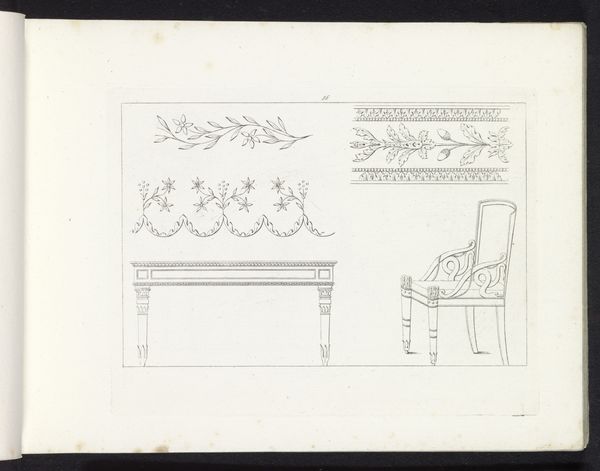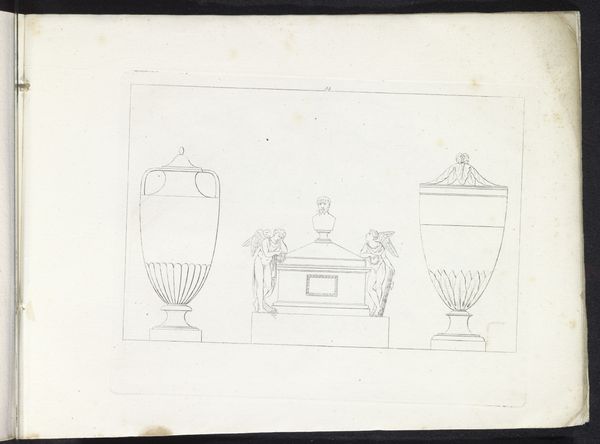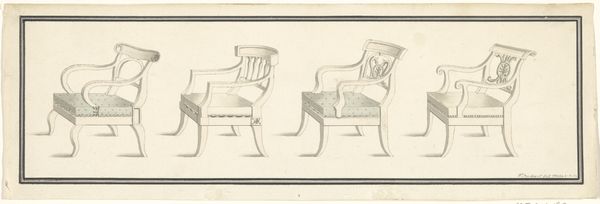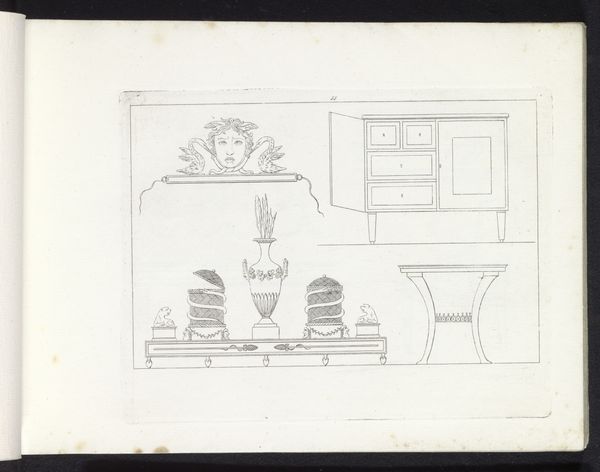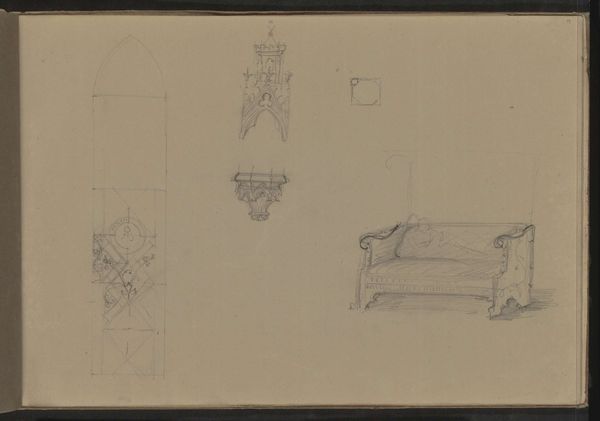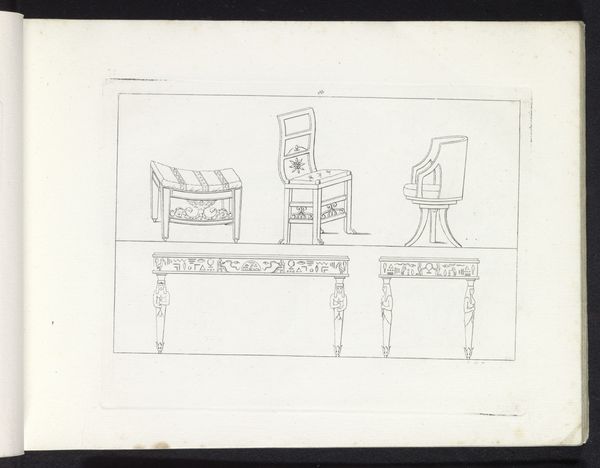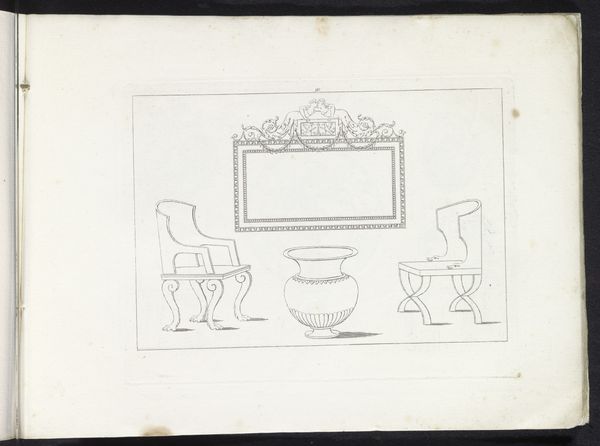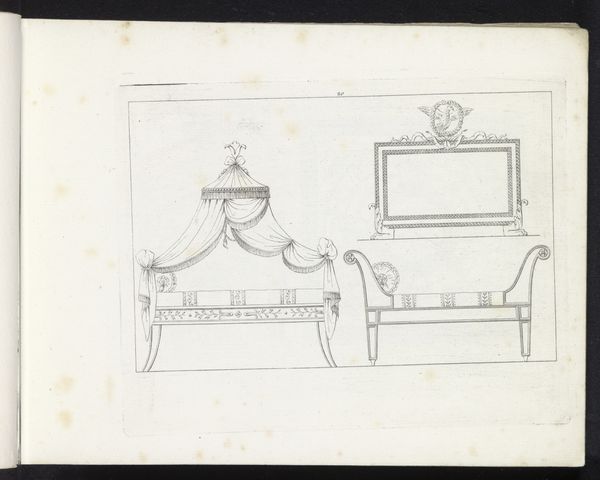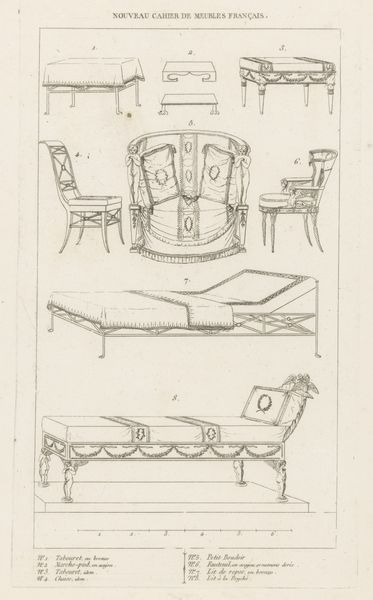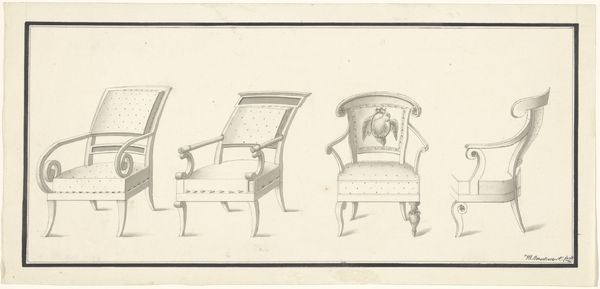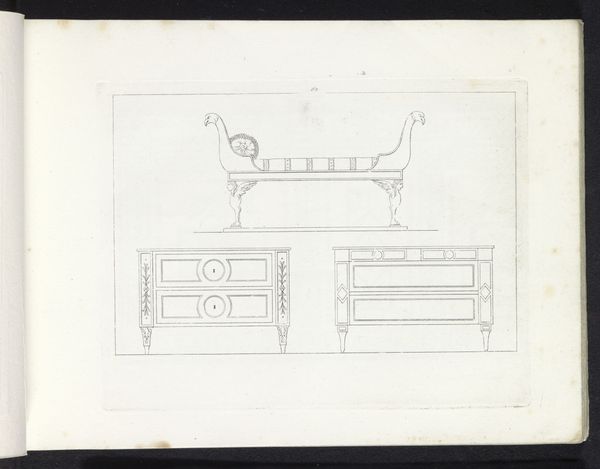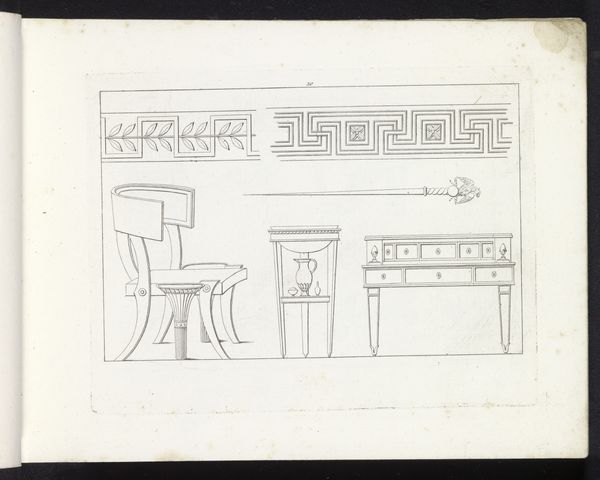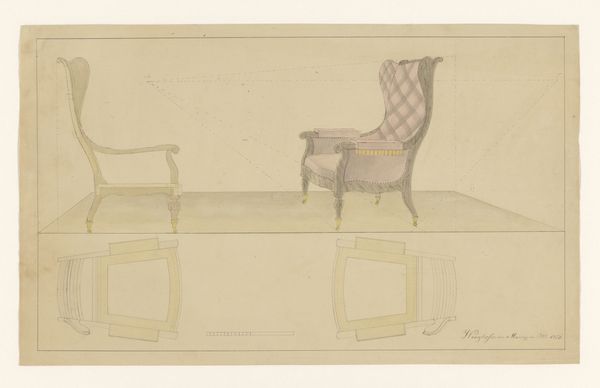
drawing, paper, ink
#
drawing
#
neoclacissism
#
paper
#
ink
#
geometric
Dimensions: height 165 mm, width 216 mm
Copyright: Rijks Museum: Open Domain
Curator: Looking at this drawing from 1817 titled "Tafel, kast, vaas en stoel"—"Table, cabinet, vase and chair"—rendered in ink on paper, what strikes you first? Editor: It's stark, almost skeletal. The thin ink lines give a ghostly presence to these objects, devoid of any real warmth or domestic comfort. There’s an austerity to it. Curator: Yes, Pietro Ruga was working in the Neoclassical style. Let's consider what this implies for our understanding of design. These aren't simply renderings; they represent a deliberate attempt to align contemporary design with the perceived ideals of ancient Greece and Rome. Notice the geometric clarity, the lack of ornamentation... Editor: Exactly! Each line, each curve feels deliberately chosen, echoing a revival of interest in classical forms during this period, yet it also exposes the labor of precise craft required to produce objects with these aesthetic parameters. What would it take to make them? Curator: I see the chair, particularly with the sphinx-like forms incorporated, as embodying the socio-political climate of the era. This recalls Napoleon's appropriation of Egyptian motifs, intertwining design with imperial ambitions and reflecting on issues of colonialism. Editor: Good point. And from the cabinet to the stool, the uniformity achieved speaks volumes about evolving material production, how new production technologies transformed furniture production at that time. This also tells us how the design process would adapt around particular machinery to achieve the "correct" look. Curator: The Neoclassical style was embraced across many social classes. By deconstructing these symbols and investigating who was creating them and consuming them, we can also explore the power dynamics and how these designs reinforced class distinctions in domestic spaces. Editor: This makes you think, who decided what constituted a proper home or chair? It reminds us of art's embeddedness in economic realities, reflecting on what was valued, literally made, and who made it, and the broader socio-political world in 1817. Curator: Thinking through design as cultural artefact, it reminds us of our ongoing obligations of how cultural artifacts represent the identity, labor, and means of making. Editor: Absolutely! These pieces provide tangible links to broader manufacturing and consumption dynamics. It really speaks volumes.
Comments
No comments
Be the first to comment and join the conversation on the ultimate creative platform.
